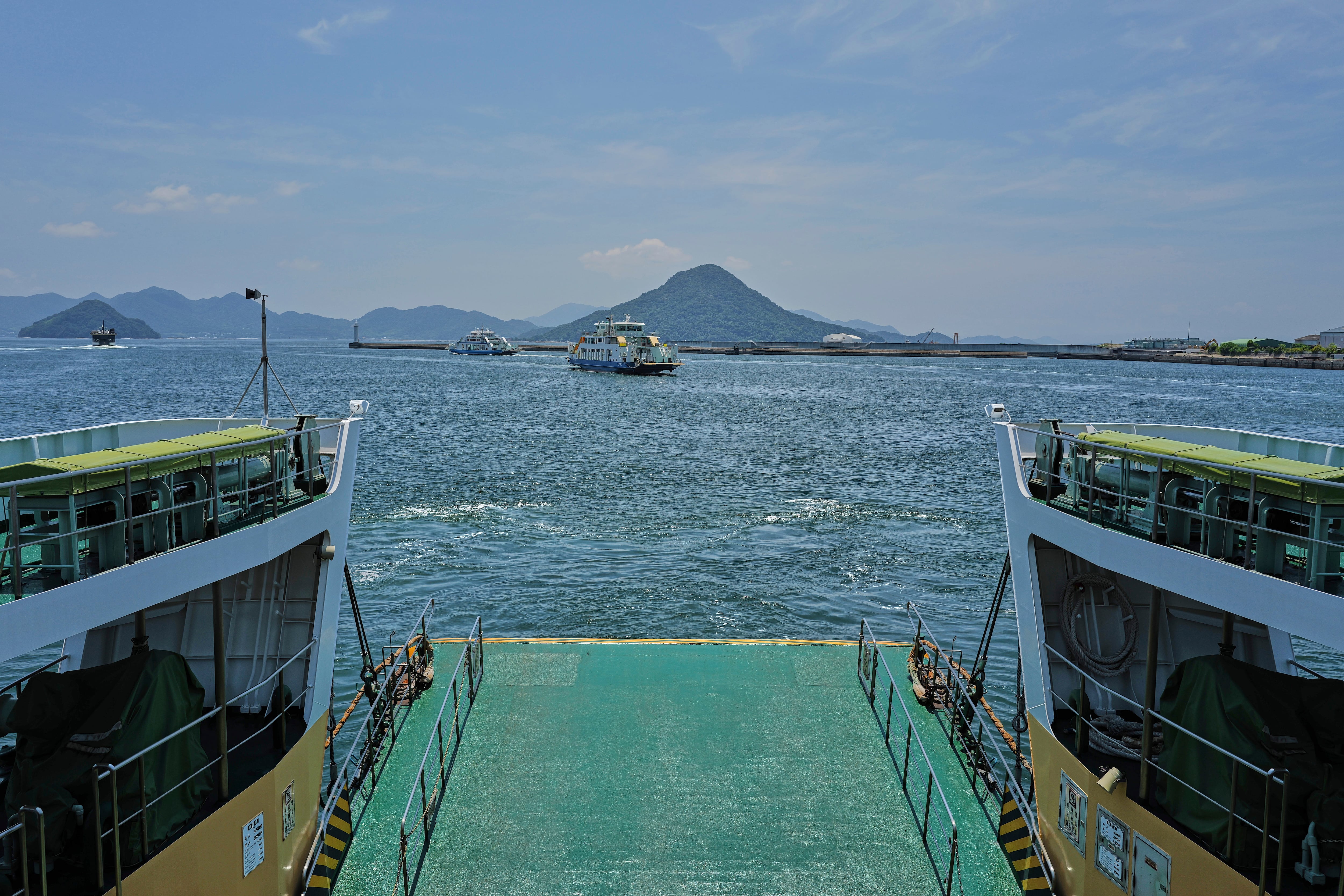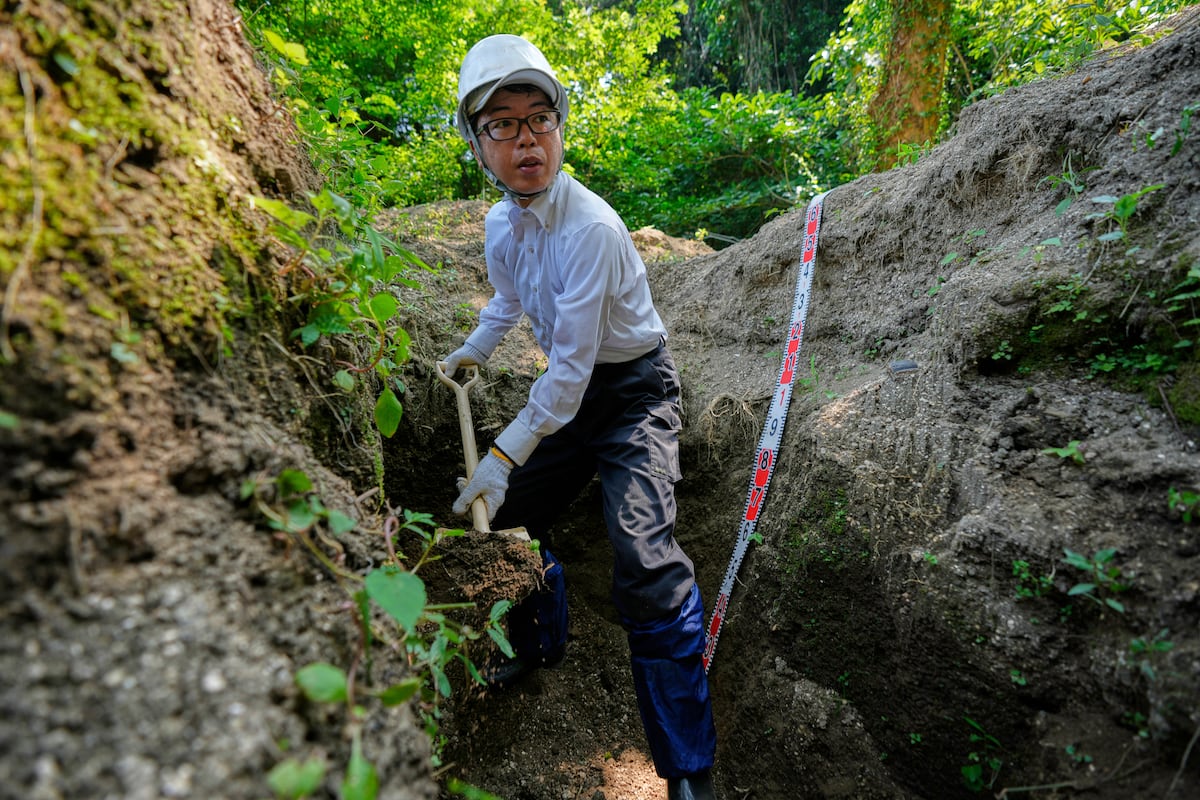NINOSHIMA, Japan — When the first atomic bomb detonated 80 years ago on Aug. 6, thousands of the dead and dying were brought to the small, rural island of Ninoshima, just south of Hiroshima, by military boats with crews that had trained for suicide attack missions.
Many of the victims had their clothes burned off and their flesh hung from their faces and limbs. They moaned in pain.
Because of poor medicine and care, only a few hundred were alive when the field hospital closed Aug. 25, according to historical records. They were buried in various locations in chaotic and rushed operations.
Decades later, people in the area are looking for the remains of the missing, driven by a desire to account for and honor the victims and bring relief to survivors who are still tormented by memories of missing loved ones.
“Until that happens, the war is not over for these people,” said Rebun Kayo, a Hiroshima University researcher who regularly visits Ninoshima to search for remains.
Evidence of the missing is still being unearthed
On a recent morning, Kayo visited a hillside plot in the forest where he has dug for remains since 2018. He put on rubber boots and a helmet and sprayed insect repellent.
After planting chrysanthemum flowers and praying, Kayo carefully began shoveling gravel from a hole the size of a bathtub. When the soil was soft enough, he sifted it for bone fragments.
As he worked under the scorching sun, he imagined the pain and sadness that the victims felt when they died.
Kayo so far has found about 100 bone fragments, including skull pieces and an infant’s jaw bone with little teeth attached. He found the bones in an area suggested by a Ninoshima resident, whose father had witnessed soldiers burying bodies that were brought to the island on boats from Hiroshima 80 years ago.
“The little child buried here has been alone for all these years,” he said of the bones he believes belonged to a toddler. “It’s just intolerable.”
Victims arrived in the bombing’s chaotic aftermath
The U.S. atomic attack on Hiroshima instantly destroyed the city and killed tens of thousands near the hypocenter, about 6 miles north of Ninoshima. The death toll by the end of that year was 140,000.
As a 3-year-old child, Tamiko Sora was with her parents and two sisters at their home just 0.9 miles from the hypocenter. The blast destroyed their house and Sora’s face was burned, but most of her family survived.
As they made their way to a relatives’ home, she met an unattended 5-year-old girl who identified herself as Hiroko and a woman with severe burns desperately asking people to save the baby she carried. Sora still thinks of them often and regrets her family could not help. Her family visited orphanages but could not find the girl.
Sora now thinks the people she met that day, as well as her missing aunt and uncle, might have ended up on Ninoshima.
Ninoshima saw 3 weeks of chaos, deaths and rushed burials
Within two hours of the blast, victims began arriving by boat from Hiroshima at the island’s No. 2 quarantine center. Its buildings filled with patients with severe wounds. Many died on the way to the island.
Imperial Army service members were on around-the-clock shifts for cremation and burials on the island, according to Hiroshima City documents.
Eiko Gishi, then an 18-year-old boat trainee, oversaw carrying patients from the pier to the quarantine area for first aid. He and other soldiers cut bamboo to make cups and trays. Many of the wounded died soon after sipping water.
In recollections published by the city years later, Gishi wrote that soldiers carefully handled bodies one by one at the beginning, but were soon overwhelmed by the huge number of decomposing bodies and used an incinerator originally meant for military horses.
Even this wasn’t enough and they soon ran out of space, eventually putting bodies into bomb shelters and in burial mounds.
“I was speechless from the shock when I saw the first group of patients that landed on the island,” a former army medic, Yoshitaka Kohara, wrote in 1992.
“I was used to seeing many badly wounded soldiers on battlefields, but I had never seen anyone in such a cruel and tragic state,” he said. “It was an inferno.”
Kohara was at the facility until its closure, when only about 500 people were left alive. When he told surviving patients that the war had ended on Aug. 15, he recalled they looked emotionless and “tears flowed from their crushed eyes, and nobody said a word.”
Thousands of remains found on Ninoshima but more are still missing
Kazuo Miyazaki, a Ninoshima-born historian and guide, said that toward the end of WWII the island was used to train suicide attackers using wooden boats meant for deployment in the Philippine Sea and Okinawa.
“Hiroshima was not a city of peace from the beginning. Actually, it was the opposite,” Miyazaki said. “It’s essential that you learn from the older generations and keep telling the lessons to the next.”

Miyazaki, 77, lost a number of relatives in the atomic bombing. He has heard first-person stories from his relatives and neighbors about what happened on Ninoshima, which was home to a major army quarantine during Japan’s militarist expansion. His mother was an army nurse who was deployed to the field hospital on the island.
The remains of about 3,000 atomic bombing victims brought to Ninoshima have been found since 1947 when many were dug out of bomb shelters. Thousands more are thought to be missing.
People visit the island to remember the missing
After learning of the search for remains on Ninoshima, Sora, the atomic bomb survivor struck by the girl and infant she met after the explosion, traveled to the island twice to pray at a cenotaph commemorating the dead.
“I feel they are waiting for me to visit,” Sora said. “When I pray, I speak the names of my relatives and tell them I’m well and tell them happy stories.”
In a recent visit to Sora at her nursing home, the researcher Kayo brought a plastic box containing the baby jaw with little teeth and skull fragments he found on Ninoshima. The bones were placed carefully on a bed of fluffy cotton.
Kayo said he wanted to show Sora the fragile fragments, which could be from a child the same age as the one Sora met 80 years ago. He plans to eventually take the bones to a Buddhist temple.
Sora prayed in silence while looking at the bones in the box and then spoke to them.
“I’m so happy you were finally found,” she said. “Welcome back.”
Read the full article here





